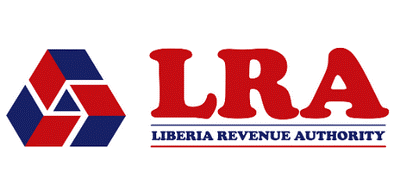Training On Panel Data Models Using STATA
INTRODUCTION
Panel data, also known as longitudinal data, refers to datasets that contain observations on multiple entities (such as individuals, firms, or countries) over time. This type of data offers several advantages over cross-sectional data, including the ability to control for individual heterogeneity and to better understand dynamics over time.
STATA is a powerful tool for analyzing panel data, providing a wide range of built-in commands for estimating fixed-effects, random-effects, and dynamic panel models, among others. This course is designed to provide participants with an in-depth understanding of panel data analysis using STATA, including both the theoretical foundations and practical application.
DURATION
5 Days
TARGET AUDIENCE
This course targets researchers, practitioners in all fields who want to learn about panel data estimates using STATA.
OBJECTIVES
By the end of this training, participants will be able to:
- Understand the Basics of Panel Data: Learn the structure and characteristics of panel data, and understand the advantages it provides over purely cross-sectional or time-series data.
- Manage and Prepare Panel Data: Import, reshape, and clean panel datasets in STATA, and understand how to handle missing data and other common data issues.
- Conduct Descriptive Analysis for Panel Data: Summarize and visualize panel data, and explore key features such as trends over time.
- Estimate and Interpret Panel Data Models: Learn the differences between fixed-effects, random-effects, and mixed models, and when to apply each.
- Test Model Assumptions and Interpret Diagnostics: Conduct statistical tests to choose the appropriate model (Hausman test, Breusch-Pagan Lagrange Multiplier test, etc.) and check for issues like multicollinearity and autocorrelation.
- Apply Advanced Panel Data Techniques: Explore dynamic panel models, generalized method of moments (GMM) estimators, and models with lagged variables.
- Report and Present Results: Learn how to interpret STATA output for panel data models, generate tables and graphs, and present results in a clear and effective manner.
COURSE OUTLINE
Module 1: Introduction to Panel Data Analysis
- What is Panel Data?
- Definition and structure of panel data (balanced vs. unbalanced).
- Advantages of panel data over cross-sectional and time-series data.
- Common applications of panel data in economics, finance, and social sciences.
- Panel Data Structure in STATA
- Importing panel data into STATA.
- Reshaping datasets from wide to long format.
- Describing panel data: xtdescribe, xtsum, and visualizing time trends.
- Handling missing values and unbalanced panel data.
Module 2: Fixed-Effects and Random-Effects Models
Understanding the Fixed-Effects Model (FEM)
- Concept of controlling for unobserved heterogeneity using entity-specific effects.
- Estimating fixed-effects models in STATA: xtreg, fe.
- Interpreting the output of fixed-effects models.
- When to use fixed-effects models: pros and cons.
Understanding the Random-Effects Model (REM)
- The random-effects assumption and its interpretation.
- Estimating random-effects models in STATA: xtreg, re.
- Interpreting the output of random-effects models.
- Comparison between fixed-effects and random-effects models.
Choosing Between Fixed and Random Effects
- Hausman Test for model selection: hausman.
- Breusch-Pagan Lagrange Multiplier Test for random-effects: xttest0.
Module 3: Advanced Diagnostics and Model Testing
Assessing Model Assumptions
- Testing for heteroskedasticity and autocorrelation in panel data models: xttest3, xtserial.
- Correcting for heteroskedasticity and autocorrelation using robust standard errors: xtreg, fe vce(robust).
Cross-sectional Dependence and Serial Correlation
- Identifying and testing for cross-sectional dependence: xtcsd and xttest2.
- Implementing feasible generalized least squares (FGLS) to correct for serial correlation and heteroskedasticity: xtgls.
Module 4: Dynamic Panel Data Models and GMM Estimators
Introduction to Dynamic Panel Data Models
- Understanding the role of lagged dependent variables in panel models.
- Issues with endogeneity in dynamic models and how to handle it.
Generalized Method of Moments (GMM) Estimators
- Understanding the difference between difference GMM and system GMM.
- Estimating dynamic panel data models using xtabond and xtdpd.
- Testing for instrument validity using Hansen’s J test and the Arellano-Bond test for autocorrelation.
Application of GMM Techniques
- Practical application using case studies: financial data, firm performance data, and macroeconomic indicators.
Module 5: Presentation and Interpretation of Results
Interpreting STATA Output
- Understanding coefficients, standard errors, p-values, and R-squared in panel data models.
- Making policy or business recommendations based on your findings.
Reporting Results
- Creating professional tables and graphs for reporting panel data results.
- Exporting results to formats such as Excel or Word: outreg2 and esttab.
- Writing effective research reports or publications based on panel data analysis.
CERTIFICATION
- Upon successful completion of this training, participants will be issued with Macskills Training and Development Institute Certificate
TRAINING VENUE
- Training will be held at Macskills Training Centre. We also tailor make the training upon request at different locations across the world.
AIRPORT PICK UP AND ACCOMMODATION
- Airport pick up and accommodation is arranged upon request
TERMS OF PAYMENT
- Payment should be made to Macskills Development Institute bank account before the start of the training and receipts sent to info@macskillsdevelopment.com
Training On Panel Data Models Using Stata in Kenya
| Dates | Fees | Location | Action |
|---|---|---|---|
| 20/07/2026 - 25/07/2025 | $1,250 | Nairobi |
|
| 13/10/2025 - 17/10/2025 | $1,500 | Mombasa |
|
| 27/10/2025 - 31/10/2025 | $1,250 | Nairobi |
|
| 03/11/2025 - 07/11/2025 | $2,900 | Kigali |
|
| 17/11/2025 - 21/11/2025 | $1,500 | Mombasa |
|
| 24/11/2025 - 28/11/2025 | $1,250 | Nairobi |
|
| 01/12/2025 - 05/12/2025 | $2,900 | Kigali |
|
| 08/12/2025 - 12/12/2025 | $1,250 | Nairobi |
|
| 05/01/2026 - 09/01/2026 | $4,950 | Dubai |
|
| 19/01/2026 - 23/01/2026 | $2,900 | Kigali |
|
| 26/01/2026 - 30/01/2026 | $1,250 | Nairobi |
|
| 02/02/2026 - 06/02/2026 | $4,000 | Johannesburg |
|
| 16/02/2026 - 20/02/2026 | $1,750 | Mombasa |
|
| 23/02/2026 - 27/02/2026 | $1,250 | Nairobi |
|
| 02/03/2026 - 06/03/2026 | $4,950 | Instanbul |
|
| 16/03/2026 - 20/03/2026 | $2,900 | Kigali |
|
| 23/03/2026 - 29/05/2026 | $1,250 | Nairobi |
|
| 06/04/2026 - 10/04/2026 | $4,000 | Pretoria |
|
| 13/04/2026 - 17/04/2026 | $1,750 | Mombasa |
|
| 20/04/2026 - 24/04/2026 | $1,250 | Nairobi |
|
| 04/05/2026 - 08/05/2026 | $4,950 | Dubai |
|
| 18/05/2026 - 22/05/2026 | $2,900 | Kigali |
|
| 25/05/2026 - 29/05/2026 | $1,250 | Nairobi |
|
| 01/06/2026 - 05/06/2026 | $4,000 | Johannesburg |
|
| 15/06/2026 - 19/06/2026 | $1,750 | Mombasa |
|
| 22/06/2026 - 19/06/2026 | $1,250 | Nairobi |
|
| 05/01/2026 - 09/01/2026 | $4,950 | Dubai |
|
| 19/01/2026 - 23/01/2026 | $2,900 | Kigali |
|
| 26/01/2026 - 30/01/2026 | $1,250 | Nairobi |
|
| 02/02/2026 - 06/02/2026 | $4,000 | Pretoria |
|
| 16/02/2026 - 20/02/2026 | $1,750 | Mombasa |
|
| 23/02/2026 - 27/02/2026 | $1,250 | Nairobi |
|
| 02/03/2026 - 06/03/2026 | $4,950 | Instanbul |
|
| 16/03/2026 - 20/03/2026 | $2,900 | Kigali |
|
| 23/03/2026 - 27/03/2026 | $1,250 | Nairobi |
|
| 06/04/2026 - 10/04/2026 | $4,000 | Johannesburg |
|
| 13/04/2026 - 17/04/2026 | $1,750 | Mombasa |
|
| 20/04/2026 - 24/04/2026 | $1,250 | Nairobi |
|
| 04/05/2026 - 08/05/2026 | $4,950 | Dubai |
|
| 18/05/2026 - 22/05/2026 | $2,900 | Kigali |
|
| 25/05/2026 - 29/05/2026 | $1,250 | Nairobi |
|
| 01/06/2026 - 05/06/2026 | $4,000 | Pretoria |
|
| 15/06/2026 - 19/06/2026 | $1,750 | Mombasa |
|
| 22/06/2026 - 26/06/2026 | $1,250 | Nairobi |
|





















